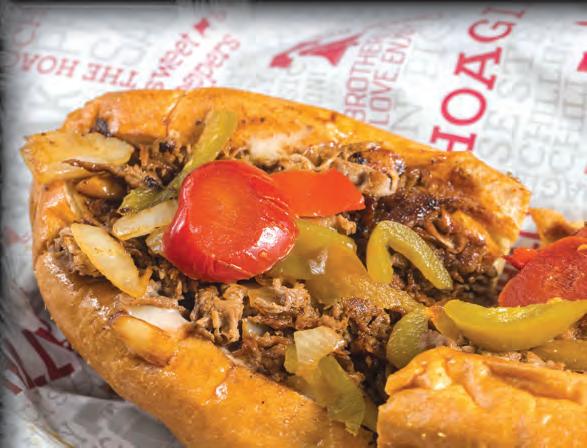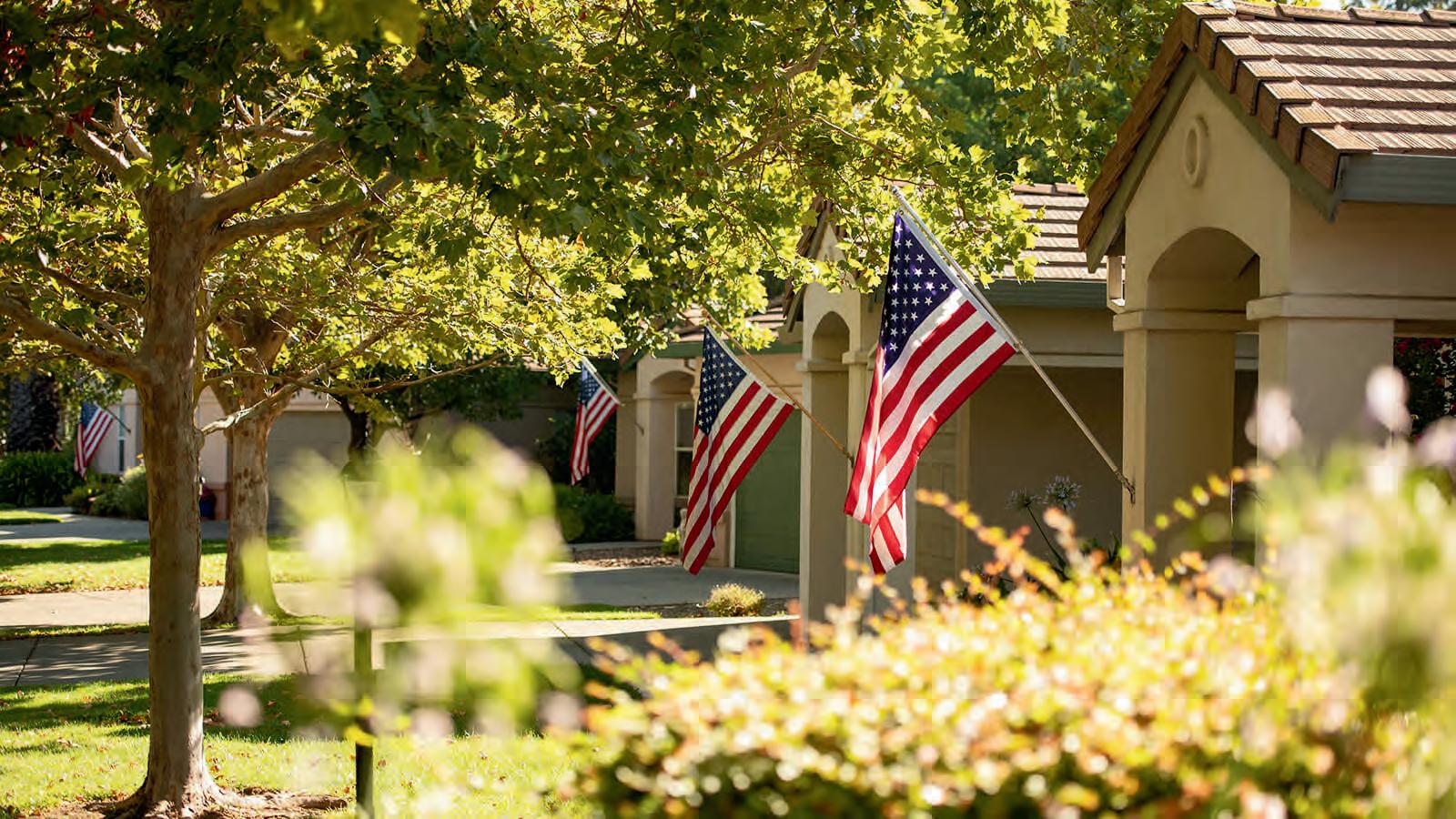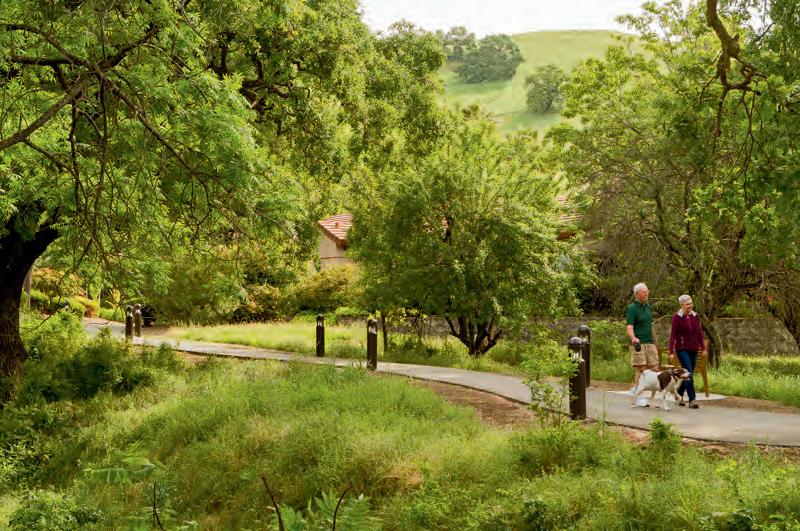TRAVIS TAILWIND
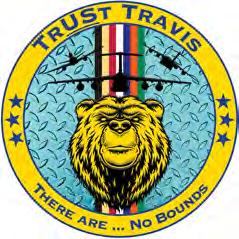




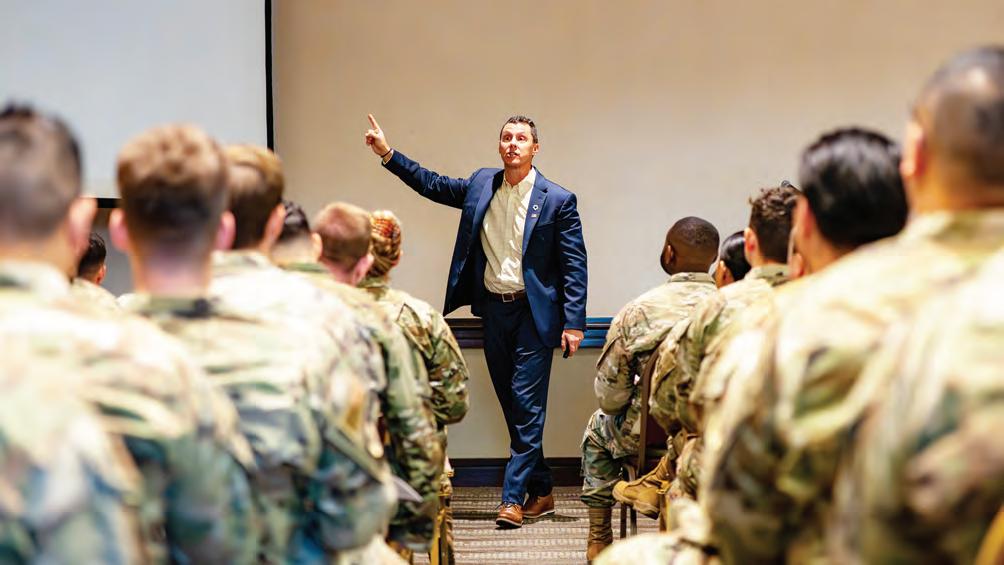
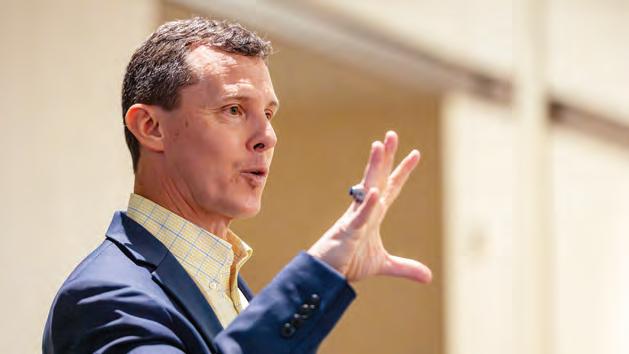

During the exercise, 621st MSOS teams provided critical airlift expertise and coordination to a diverse array of joint partners, including five Air Force fighter squadrons, I Corps, 11th Airborne Division, III Marine Expeditionary Force, and U.S. Army Pacific Command, at 9 locations across 4 countries in the Pacific. Efforts focused on optimizing airlift prioritization, synchronizing Joint force operations within the Air Operations Center, and enhancing ground cargo readiness for strategic airlift missions. Their activities encompassed instructing users on cargo preparation, facilitating headquarters integration, managing drop zone control, and executing an airborne jump during a joint forcible entry.
“Our integrated approach provides a comprehensive operational picture, extending beyond individual locations to encompass U.S. Army See DLE, Page 3

BASE — It’s howl-o-ween season, and the Travis AFB Exchange is on the prowl for the Travis AFB community’s bestdressed furry, feathered or scaly friends with the Halloween Pet Costume Photo Contest.
Through Oct. 31, authorized Travis AFB Exchange shoppers 18 years or older can submit a photo of their pets in their Halloween finest at ShopMyExchange.com/ Sweepstakes for their chance to win a share of $3,000 in gift cards.
Two grand-prize winners each will receive a $500 Exchange gift card. Eight runners-up will receive a $250 gift card each. The worldwide contest is sponsored by
Blue Buffalo. “The Travis Air Force Base Exchange recognizes that pets help complete military families,” said General Manager Cathie Byrns. “Whether your pup is dressed as a pirate or your guinea pig is disguised as a ghost, all family critters are invited to participate in the photo contest. At Travis, we’d love to see a winner in this worldwide contest.”
No purchase is necessary to win. Winners will be contacted around Nov. 21. Department of Defense and Coast Guard civilians and honorably discharged veterans who have confirmed their eligibility to shop online may also enter. Veterans can visit https://aafes. media/paveterans to learn more about their shopping benefit. DoD civilians can visit https://aafes.media/ cacbenefitspa.



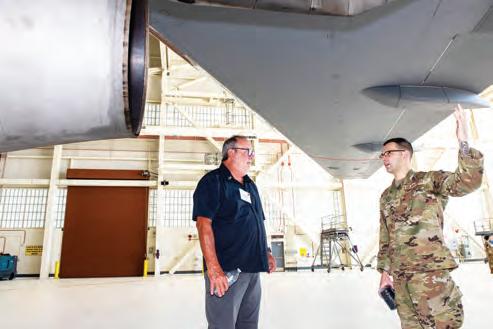
A rmy & A ir Force
exchAnge Service Public A FFAirS
TRAVIS AIR FORCE

Serving Travis Air Force Base and the surrounding community 1250 Texas St., Fairfield, Calif. 94533 707-425-4646 | Fax 707-425-5924
Publishers: Foy S. McNaughton and T. Burt McNaughton
Advertising Manager: T. Burt McNaughton Editor: Todd R. Hansen Layout : Aaron Rosenblatt
including inserts or supplements, does not constitute an endorsement by the Department of Defense, the Department of the Air Force or the Daily Republic of the products or services advertised. Those off base who wish to receive home delivery of Travis Tailwind can call 707-427-6975. For information on paid advertising, call 707-425-4646. Send correspondence to: Travis Tailwind/Daily Republic, 1250 Texas St., Fairfield, CA 94533.
BASE — Level up your setup! Travis BX shoppers can enter the Monster Energy Gaming Lounge Sweepstakes for a chance at nearly $22,000 in gaming prizes and gift cards, with 55 winners selected.
Authorized military shoppers aged 18 and older may enter at ShopMyExchange.com/sweepstakes through Nov. 30.
Five grand-prize winners will each receive a Monster Energy gaming chair, Monster Xbox One controller, Monster gaming headset, and a Monster cooler along with a $2,500 Exchange gift card. Each grand prize is valued at $3,369.50.
“Gaming is more

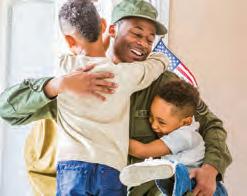

than just entertainment for many service members – it’s a way to find balance and ease the stress of their demanding lives,” Travis Exchange General Manager Cathie
Byrns said. “Through the sweepstakes, Travis shoppers can take a step toward creating the ultimate space where they can truly unwind.” Winners will be
selected and notified no later than Dec. 12. No purchase is necessary to enter. Department of Defense and Coast Guard civilians and honorably discharged veterans who have confirmed their eligibility to shop online may also enter. Veterans can visit https://aafes.media/ paveterans to learn more about their shopping benefit. DoD civilians can visit https://aafes.media/ cacbenefitspa. For full sweepstakes rules, visit ShopMyEx change.com/sweepstakes.










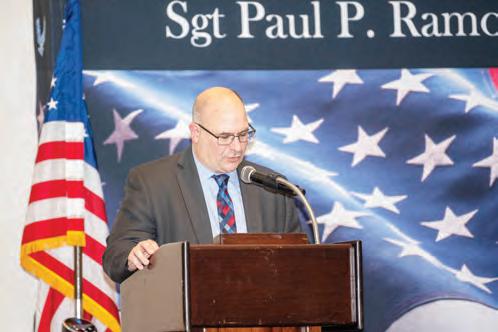

John Levitow Jr., son of Medal of Honor recipient Air Force Sgt. John Levitow, speaks to Airman Leadership School instructors and students during a visit to Travis Air Force Base, Sept. 24. Levitow met with the class to discuss leadership and what the enlisted force meant to his father.
A rmy & A ir Force exchAnge Service Public A
TRAVIS AIR FORCE
BASE — The force will be with Travis military children at the Exchange’s free in-store Marvel-Star Wars role playing event while supplies last on Saturday, Oct. 4 for military children.
Military children can live out their Marvel and Star Wars dreams with in-store dress up items, like the Star Wars Lightsaber, Spiderman Venom Versus Venom Strike Blaster, Fantastic Four Titan Hero Brocade and more.
“We’re turning the Exchange into a Marvel multiverse full of fun and imagination,” said Travis Exchange General Manager Cathie Byrns. “Team Exchange is honored to host events that bring families together to create unforgettable memories.”
Military families can visit the Travis BX to participate in the free interactive event. Pre-registration for events is not required. For more information, shoppers can contact the Travis Exchange or visit the Travis Exchange’s Facebook or Instagram.
YOKOTA AIR BASE, Japan — The U.S. Air Force, Japan Air SelfDefense Force and Royal Australian Air Force commenced the first trilateral Exercise Bushido Guardian 25 at Misawa Air Base, Japan, Sept. 29.
BG25 is a JASDF-led iteration of a trilateral exercise designed to enhance interoperability between the U.S., RAAF and JASDF. Exercise BG has historically been a bilateral exercise between the JASDF and RAAF, but BG25 marks the first time it has expanded to a trilateral exercise.
From Page 1
Forces Command, U.S. Army Europe, Africa Command, and U.S. Army North Command, down to the divisional level,” explained U.S. Air Force Lt. Col. William Staley, 621st MSOS commander. “This enhanced situational awareness informs AOC planning and execution, resulting in minimized inefficiencies and improved operational effectiveness.”
The 621st MSOS identified three key initiatives prior to DLE participation: establishing a standardized joint inspection program, expanding beyond lineof-sight communication capabilities, and identifying critical sustainment capabilities.
“Our teams analyzed tasking requirements and identified opportunities to exercise core mission essential tasks,”
said U.S. Air Force Master Sgt. David Lemon, 621st MSOS Operations Superintendent. “With defined learning objectives and requirements, we developed targeted training scenarios.”
The complex, global nature of the air mobility exercise presented inherent challenges, which served as catalysts for adaptation and innovation.
“Maintaining situational awareness and effectively communicating evolving requirements within our teams’ areas of responsibility proved to be a significant challenge,” Lemon noted. “Our engagements spanned overlapping objectives across various joint partners with disparate mission requirements.
Teams exercised mission command principles, balancing airlift prioritization with the need for validation from higher authorities regarding movement plans, despite limited visibility into the



broader strategic context.”
To enhance preparedness for future conflicts, improved communication protocols are essential.
Recognizing that key stakeholders may not always be readily accessible during real-time ground operations, teams practiced operating under missiontype orders, enabling independent execution when communication with higher headquarters was constrained.
“We empowered our partners to meet strategic objectives while capturing valuable lessons learned across multiple commands,” Lemon emphasized. “These exercises are instrumental in identifying process improvements across various levels of command.”
The 621st MSOS pro-
vides critical command and control, logistics, and air mobility support, enabling rapid global force projection. The squadron operates from 20 locations, with four additional locations planned, spanning Europe to Asia, and maintains Air Mobility Liaison Officers at Army, Navy, and Marine headquarters worldwide.
“Serving within the Expeditionary Air Ground Liaison Element community has been an incredibly rewarding experience,” Lemon stated. “Recognizing that future conflicts will require integrated, multi-domain approaches, we provide the essential tools and understanding necessary for seamless joint operations, mitigating potential bottlenecks and enhancing overall effectiveness.”




This year’s Bushido Guardian focuses on the critical integration of fifth-generation fighter capabilities. The exercise ensures that aircrews, maintainers and support personnel are prepared to operate seamlessly together in a complex, multi-domain environment. By leveraging the latest technologies during realistic combat training scenarios, military members are furthering PACAF’s objectives in the Indo-Pacific, ensuring rapid responses to any challenges alongside allies and partners.
Approximately 350 U.S. airmen will train alongside 300 JASDF and 100 RAAF service members in BG25. Approximately 25 aircraft from the U.S., Australia and Japan will conduct 25 missions across Misawa AB from Sept. 29 through Oct. 10.
“Bushido Guardian 2025 marks a pivotal moment as we train with our Royal Australian Air Force and Japanese Air Self-Defense Force allies here at Misawa Air Base,” said U.S. Air Force Col. Paul Davidson, 35th Fighter Wing commander. “This trilateral exercise is more than just flying sorties; it’s about forging stronger bonds, sharing expertise and refining our combined tactics. By working together, we enhance interoperability, improve our collective readiness and demonstrate our unwavering commitment to a free and open Indo-Pacific.”









Secretary of the a ir force Public a ffairS
ARLINGTON, Va. — In August, the Department of the Air Force concluded its DepartmentLevel Exercise series, a month-long series of exercises conducted across the Western Pacific, including Resolute Force Pacific, Resolute Space, Mobility Guardian 2025, Emerald Warrior and Bamboo Eagle 25-3.
The purpose? DAF has been investing in its readiness and training with more sophisticated operational exercises, changes to enhance the rapid deployment of forces, and the regular exercise of mission command. The vision for the DLE series was to demonstrate the DAF’s preparedness for complex, large scale military operations. The DLE is a series of nested, phased exercises that were conducted in July and August 2025, which involved multiple commands and areas of operation and exercised airmen and guardians’ abilities to conduct sustained, complex military operations involving large numbers of forces in scenarios where air and space superiority, power projection, and global mobility are contested.
On the third day of the 2025 Air, Space and Cyber Conference, Gen. Kevin Schneider, Pacific Air Forces commander; Gen. Adrian L. Spain, commander of Air Combat Command; Gen. John D. Lamontagne, commander of Air Mobility Command; and Lt. Gen. David N. Miller Jr., commander of Space Operations Command, came together to share what they have learned from “Exercising at Scale,” with retired Air Force Gen. Jacqueline D. Van Ovost, former commander of U.S. Transportation Command, serving as the moderator.
This panel brought together four of the most forward leaning commanders, leaders who are shaping how we train, integrate, and fight across domains.
The group of leaders kicked off the panel discussing why the DLE was developed. Schneider talked about how the U.S. Air Force is “highly successful” at doing all-day, all-year-round operations, both in combat and other activities. He then talked about tactical-level combat exercises that hone tactical skill sets, and finally how command post exercises at the operational level are usually conducted without fielded forces.
“The ability to pull all three of those things

together, higher headquar ters exercises all the way down to the lowest airmen in the field, to have a command and control and communications all the way through those echelons of command to focus on operational-level campaigning over a longer duration,” was the value of conducting the DLE said Schneider, while also highlighting the significance of stress-testing logistics and sustainment through the protracted nature of the month-long exercise series. “It was a big lift … but it was highly successful, and I believe well worth the investment from the United States Air Force and the Department of the Air Force to continue to pursue things like this.”
Lamontagne talked about the opportunity to operate at speed, scale, and range of possible contingencies.
“Four hundred aircraft,
15,000 airmen, 50 differ ent locations; it takes a lot of work to make that happen,” Lamontagne said. “That range – it’s one thing to do that within the continental United States and another thing entirely to do that around the world. I would submit our United States Air Force is the only air force on the planet that can project forces at that speed, at that scale, and that range.”
Spain highlighted what training provides to the force.
“One of the reasons we’re the world’s greatest Air Force is because we train hard,” Spain said. “We challenge ourselves in training and we’re not training just to look good and we’re not training to make ourselves feel better. We’re training to learn lessons.” The ACC commander continued, talking about intentionally pushing both airmen and weapon systems in training sce-


going to garner from it are
going to help us propel our combat capabilities even farther and faster.”
Spain also highlighted
the importance of the allies and partners in the DLE.
“These exercises are an opportunity for us to train with our allies and partners in ways that we often


don’t get to [train],” Spain said. “So, while we’re getting better, it’s really about the joint and coalition team getting better.” As the leaders discussed lessons learned, Miller talked about the Space Force taking advantage of the large-scale effort to continue developing its capabilities.
“What the Joint Force needs from the Space Force as a decisive [capability] is really two things; deliver that space-enabled combat edge” in a contested environment, said Miller, “while simultaneously protecting our joint force, including ourselves, from space-enabled attack.
… The lessons learned directly apply to the threats we are facing today, and more importantly underscore the investments we have made and are making … to allow us to not just keep pace but outpace potential adversaries.”
The PACAF and AMC commanders talked about the lessons learned in integrating





































roMero
M
FALLS CHURCH,
Va.
— The Department of Air Force transferred more than 178,000 biological samples from Vietnam and Korean War veterans to the Department of Veterans Affairs in August, concluding an 18-year effort to safeguard them for future studies.
The samples, previously stored at Wright-Patterson Air Force Base in Ohio, are now housed at the VA Greater Los Angeles Healthcare System’s West Los Angeles VA Medical Center, Los Angeles.

711 HPW Air & Space Biosciences Division director of operations, has helped coordinate the transfer since 2022. She said completing it was meaningful for her and to the veteran community.
“It’s a great 360 moment to be part of this because I have a grandfather who was in the Vietnam War,” she said. “Being able to say that he was a part of this research study, along with other veterans, encouraged us to see this through. This will enable the continued investigation and utilization of these essential assets in research pertaining to veterans’ health.”
He has been a strong advocate to preserve the biospecimens and for continued toxic exposure research to support affected veterans and their families.
For nearly two decades, the U.S. Air Force Research Laboratory’s 711th Human Performance Wing has been responsible for housing the biospecimens as they worked with the VA and Vietnam Veterans for America to identify a biorepository best suited to not only preserve the specimens, but one that was poised to promote future research. Dr. David Beenhouwer, VA Greater Los Angeles Healthcare System, or VAGLAHS, Principal Investigator and member of Science and Health Initiative to Combat Infectious and Life-Threatening Diseases, or VA SHIELD, acknowledged the effort.

“We worked very closely with the Air Force as well as Vietnam Veter-
ans of America and other key stakeholders to make sure that we brought this collection back to active scientific use,” Beenhouwer said. “We have all the new technologies available to us now to really help us understand other disease conditions …. We want to make sure that this is a resource, not just for Los Angeles, but for the entire research community.”
Under the VA’s Office of Research and Development’s Military Exposures Research Program and VA SHIELD, Air Force personnel and the VAGLAHS research study team prepared the biospecimens for transfer and digitized the associated clinical data over a three-week period in August.
U.S. Air Force Maj. Latasha Johnson,
Advocacy to preserve biospecimens, supporting veterans’ health
Former VVA national president Jack McManus is a Vietnam veteran who dispensed Agent Orange herbicides during Operation Ranch Hand participated in the AFHS.
“The Ranch Hand study participants agreed and signed off that the data and research would be used for however long [the specimens] had value for research,” he said. “This effort for the last six years is to have the specimens and the data … kept open for further research to help identify the effects of the Agent Orange on those people that were exposed, but also for the generations that followed.”
For Brenda Pollock, a VA SHIELD clinical research coordinator and retired Air Force medic who assisted in digitizing and organizing the AFHS biospecimens at VAGLAHS – this multientity and decades-long effort was personal.
“These particular See Vital, Page 7




.com


































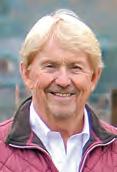











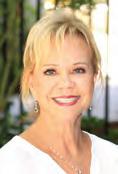
From Page 5
samples really mean a lot to me because my brother-in-law was in Vietnam,” she said. “He was exposed to Agent Orange, and he has Parkinson’s [Disease] …. Without research like this, they would have never known that that was the cause of it. Now the VA is taking care of him 100%, whereas before, he was on his own.”
Pollock served and deployed during Operation Desert Storm along with her husband whom she said has been experiencing respiratory problems. Though the AFHS assets focus on toxic herbicide exposure, she credited the biorepository’s research value for shedding light on pursuing adjacent research into other existing health hazards – fueling advancements in treatments and improving care for generations of veterans and service members.
The unique nature of the biospecimens and implications for future research
Future studies will continue to draw on the
From Page 6
The 36th AS aircrews departed Kadena AB the following day for JASDF Kenebetsu AB, transporting a HIMARS on one C-130J and two ammo pods on another. They then applied the HIDRIP procedures they had practiced the day before, demonstrating rapid reloading in a realistic environment without
AFHS, advancing public health for years to come.
“It’s a comprehensive study that probably could never be replicated again,” McManus emphasized. “The value of it is unbelievable. Where you could get a group of people that had that level of exposure and cohort groups that had no exposure to do a study over such an extended period of time?”
According to Dr. Rudy Johnson, director of VA’s MERP, future AFHS research depends on sustained funding and management, as well as increased awareness of its value within the scientific community.
“The biorepository provides a unique opportunity to investigate scientific understanding of conditions beyond the initial purpose of the study,” he said. “As research emerges from these assets, new insights into immunology and precision medicine could contribute to medical advancements that extend beyond the military.”
The VAGLAHS research study team aims to have enough biospecimens properly labeled and digitized to receive research applications by November.
traditional support or infrastructure.
This proved to be an invaluable experience for some of the newer aircrew members.
“As a new airman, being part of this training gave me valuable insight into how we prepare for real-world contingency operations,” said Airman 1st Class Andrew Giorgio, 36th AS loadmaster. “It was eye-opening to see the operational capability of the C-130J and how it supports the mission.”
A ndreA Jenkins AIR FORCES SOUTHERN
DAVID, Panama — U.S. and Panamanian officials, health professionals and military members gathered to mark the closing of AMISTAD 2025 at Hospital José Domingo de Obaldía in Panama, Sept. 25.
The ceremony marked the end of a multinational global health engagement that strengthened partnerships, expanded access to care for thousands across the country and improved military readiness.
“AMISTAD is called ‘Friendship’ precisely because we are friends,” said Kevin Marino Cabrera, U.S. Ambassador to Panama. “As we have seen in practice, Panamanian and Americans worked shoulder to shoulder – sharing knowledge, repairing equipment, painting walls, installing air conditioners, and, above all, caring for patients with dedication and respect. Each child treated, each adult diagnosed, each family supported is a reminder that health is a bridge between our nations. We leave Chiriquí with satisfaction, but above all with the conviction that the friendship between Panama and the United States is stronger today than ever.”
In Panama, AMISTAD teams treated more than 1,300 patients, delivered $200,000 in care, logged 2,700 readiness hours, and repaired over 100 pieces of medical equipment. It was a demonstration of partnership in action, as U.S. and Panamanian teams expanded access to care while building sustain-

able capacity.
“This project is more than a medical tour – it symbolizes solidarity, friendship and collaboration between our peoples,” said Dr. Manuel Zambrano, Panama’s Vice Minister of Health. “Volunteers from Panama and the United States came together to bring hope, dignity and specialized care to those who need it most. The improvements made – from equipment repairs to expanded services – are not just for today, they strengthen our system for the future.”
Representing Air Forces Southern, Brig. Gen. Leigh Swanson, Chief of the Air Force Medical Corps, emphasized that the mission was about far more than numbers.
“Here in Panama, we saw how partnership translates into readiness,” Swanson said. “Every surgery, every exchange of expertise, and every act of
service was a step toward greater interoperability, stronger relationships, and deeper trust. This is the essence of AMISTAD. It is not a one-time project, but a lasting investment in our shared future.”
Swanson also underscored the mission’s importance for U.S. service members.
“AMISTAD proves that readiness isn’t built in a classroom – it’s built in the field, with partners, solving real-world challenges,” she said. “That’s what prepares us to respond together in times of crisis.”
Across Panama – from Veraguas to Herrera to Chiriquí – AMISTAD 2025 brought specialties like gastroenterology, cardiology, pediatrics, dentistry and neonatal intensive care to patients who often wait months or years for such services. Alongside the clinical impact, U.S. Air Force civil engineers and biomedical equipment
technicians worked with Panamanian counterparts to repair equipment and upgrade facilities, leaving behind improvements that will endure long after the mission concludes.
The scope of AMISTAD 2025 highlights its scale: across five nations, the mission has provided care to nearly 5,000 patients, delivered $1.9 million in medical services, logged more than 14,700 readiness hours, and repaired over 200 pieces of equipment – figures that continue to grow as the mission concludes and final days are logged. As the closing ceremony concluded, Swanson reflected on the mission’s legacy.
“Host nations showed incredible leadership, communities welcomed us with open arms and service members demonstrated compassion, humility, and professionalism,” she said. “Knowledge shared is capability multiplied.”

